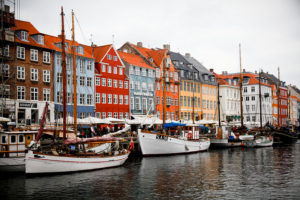2095: The Year of Gender Equality in the Workplace?
We’ll have to wait 81 years for gender parity in the workplace, a World Economic Forum report projects. Here's more about what the WEF figures mean for women around the world. Shutterstock
Shutterstock
We’ll have to wait 81 years for gender parity in the workplace, a World Economic Forum report projects.
The WEF’s annual Global Gender Gap Report (read a news brief about it here) reveals that Nordic nations remain the most gender-equal societies in world. Iceland tops the list, with Finland, Norway, Sweden and Denmark following. Also in the top 10 are Nicaragua, Rwanda, Ireland, the Philippines and Belgium, respectively.
The report, released Monday, shows the United States lagging at No. 20 out of 142 countries. While the U.S. narrowed its wage gap by 1 percentage point to 66 percent in one year, it ranks 65th in wage equality. This means that “women earn about two-thirds of what men earn for similar work according to the perception of business leaders,” WEF economist Saadia Zahidi said.
Denmark is the only country where women earn on average more than men, but only by a difference of 2 percent. Even in Denmark, when she is doing the same job as a man a woman will earn only 71 percent of the male counterpart’s pay.
Overall, there has been a modest global improvement in equality for women in the workplace. The study found that women’s attainments and opportunities in the workplace are 60 percent of those of men, up from 56 percent in the first study, released in 2006.
The study ranks countries based on the progress they have made to close the gender gap in four categories: economic participation and opportunity, educational attainment, health and survival, and political empowerment.
Among these categories, the U.S. placed lowest in health and survival. American women outlive men by only about three years, compared with an average of about six years in figures of the Organisation for Economic Co-operation and Development.
The shortage of women in positions of political power in the U.S. puts it at No. 54 in the political category, in large part because it has never had a female president. Though the U.S. has seen an increase at the Cabinet level, with women now holding 32 percent of Cabinet positions compared with 27 percent last year, it can be sharply contrasted with Sweden, where women make up 57 percent of all ministers.
Zahidi said: “Much of the progress on gender equality over the last 10 years has come from more women entering politics and the workforce. While more women and more men have joined the workforce over the last decade, more women than men entered the labor force in 49 countries. And in the case of politics, globally, there are now 26% more female parliamentarians and 50% more female ministers than nine years ago.”
Although change within countries from 2006 to the present has been largely positive, this is not the case universally. Of the 111 countries continuously covered in the report over the last nine years, 105 have narrowed their gender gaps, but six have seen prospects for women deteriorate: Sri Lanka, Mali, Croatia, Macedonia, Jordan and Tunisia. At 142nd, Yemen was given the lowest ranking of any country.
–Posted by Roisin Davis
Your support is crucial...As we navigate an uncertain 2025, with a new administration questioning press freedoms, the risks are clear: our ability to report freely is under threat.
Your tax-deductible donation enables us to dig deeper, delivering fearless investigative reporting and analysis that exposes the reality beneath the headlines — without compromise.
Now is the time to take action. Stand with our courageous journalists. Donate today to protect a free press, uphold democracy and uncover the stories that need to be told.






You need to be a supporter to comment.
There are currently no responses to this article.
Be the first to respond.